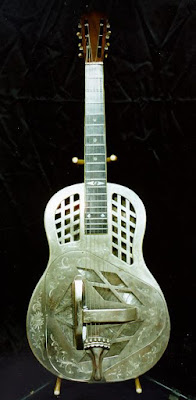 |
| aka, Paul Carrack |
The Hit
Ace’s “How Long” comes at an interesting time in the One Hit No More project. More than most of what came before it (see index in the top right corner), it flows into the larger stream of the 1970s mellow “rock” genre.
It starts with a lonely bass guitar, as I hear it, recalls the impatient tapping of a foot. It’s a good fit for a song that hints heavily at, if not future infidelity, then betrayal of some kind. Curiously, most parts of its tone and sound possess a kind of warmth - e.g., cozy trebles are all over the guitar, keys and vocals (more later) and the layered production creates a comforting ambience for a theme (again, betrayal) that seems like an odd choice. About that…
The man who wrote the song, Paul Carrack, didn’t write the song with that sound in mind. According to comments he shared with ClassicBands in 2017, Carrack envisioned something more strident and up-tempo, something closer to The Four Tops’ “Reach Out And I’ll Be There.” His explanation for the way the song wound up sounding like it did is worth sharing:
“But that wasn't how the band saw it or interpreted it, because we were basically stoned out old hippies. So, the version we came up with that evolved was the version, and I'm not knocking it 'cause it was bloody great, that wasn't how I envisioned it, that sort of laid back, smooth thing.”
It's worth reading that interview with Carrack, who comes off as humble and all-around unassuming, because it’s full of great recollections not just his own life, but growing up in the English Midlands (he’s a Sheffield lad, left fatherless too soon) as the wave that would become The British Invasion started to build. It also contains plenty of notes (too many?) on the writing and recording of “How Long” and what that meant to Ace as a band. With that, here’s one final note on the song: Carrack defends the fact it had just one verse on the grounds he wrote it on the back of a bus ticket on the way to a weekly visit to his then future mother-in-law’s for the “one square meal” he and his then-girlfriend would get each week.
The Rest of the Story
“Ace were a British rock band who enjoyed moderate success in the 1970s.”
Ace’s “How Long” comes at an interesting time in the One Hit No More project. More than most of what came before it (see index in the top right corner), it flows into the larger stream of the 1970s mellow “rock” genre.
It starts with a lonely bass guitar, as I hear it, recalls the impatient tapping of a foot. It’s a good fit for a song that hints heavily at, if not future infidelity, then betrayal of some kind. Curiously, most parts of its tone and sound possess a kind of warmth - e.g., cozy trebles are all over the guitar, keys and vocals (more later) and the layered production creates a comforting ambience for a theme (again, betrayal) that seems like an odd choice. About that…
The man who wrote the song, Paul Carrack, didn’t write the song with that sound in mind. According to comments he shared with ClassicBands in 2017, Carrack envisioned something more strident and up-tempo, something closer to The Four Tops’ “Reach Out And I’ll Be There.” His explanation for the way the song wound up sounding like it did is worth sharing:
“But that wasn't how the band saw it or interpreted it, because we were basically stoned out old hippies. So, the version we came up with that evolved was the version, and I'm not knocking it 'cause it was bloody great, that wasn't how I envisioned it, that sort of laid back, smooth thing.”
It's worth reading that interview with Carrack, who comes off as humble and all-around unassuming, because it’s full of great recollections not just his own life, but growing up in the English Midlands (he’s a Sheffield lad, left fatherless too soon) as the wave that would become The British Invasion started to build. It also contains plenty of notes (too many?) on the writing and recording of “How Long” and what that meant to Ace as a band. With that, here’s one final note on the song: Carrack defends the fact it had just one verse on the grounds he wrote it on the back of a bus ticket on the way to a weekly visit to his then future mother-in-law’s for the “one square meal” he and his then-girlfriend would get each week.
The Rest of the Story
“Ace were a British rock band who enjoyed moderate success in the 1970s.”





